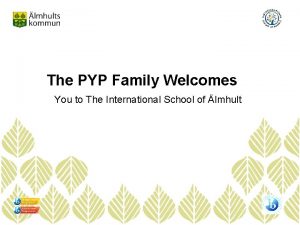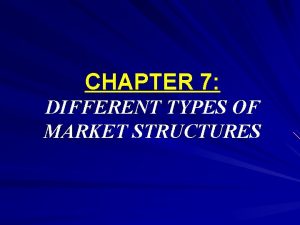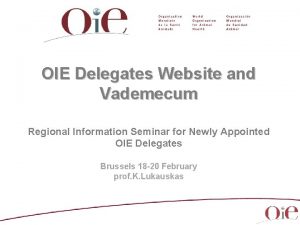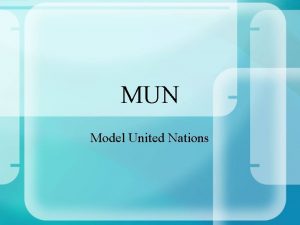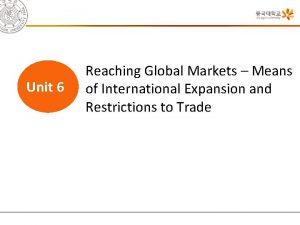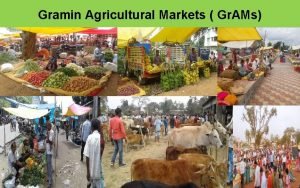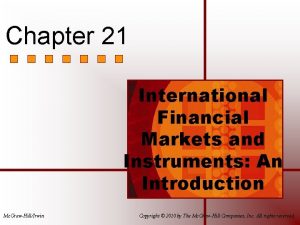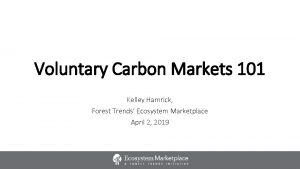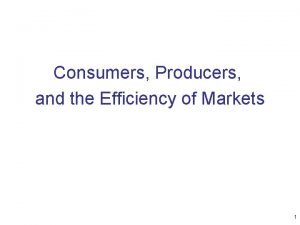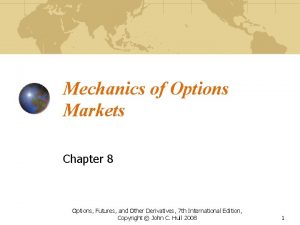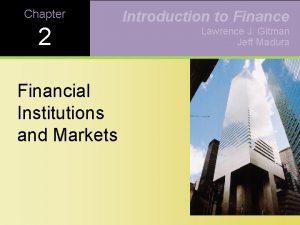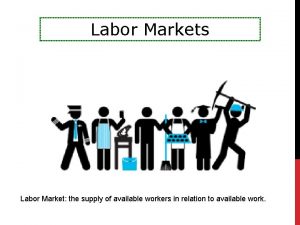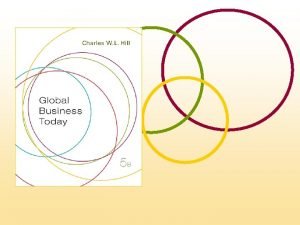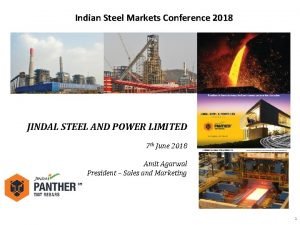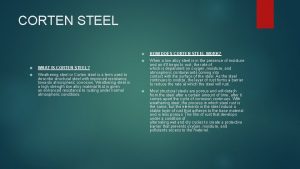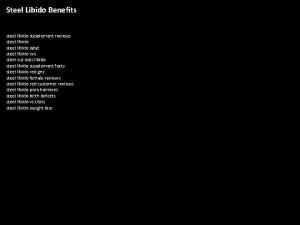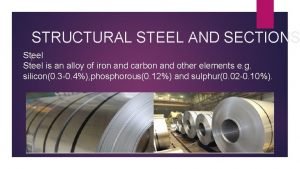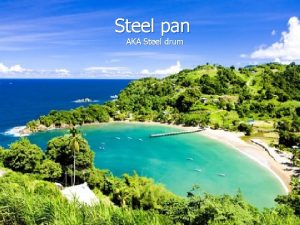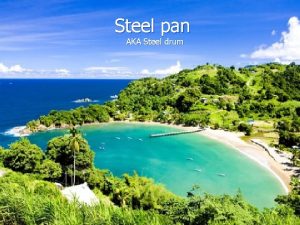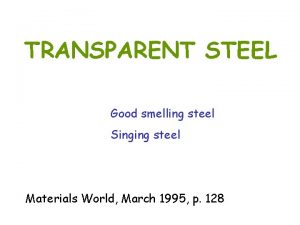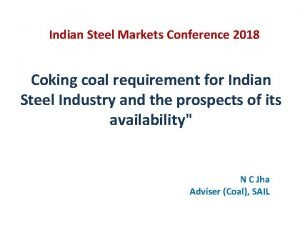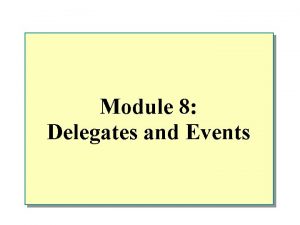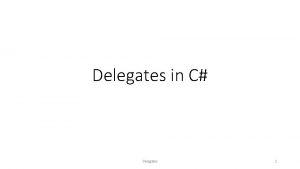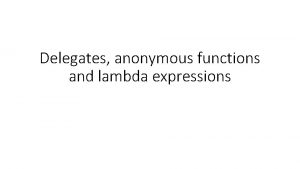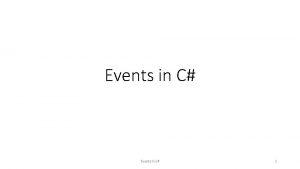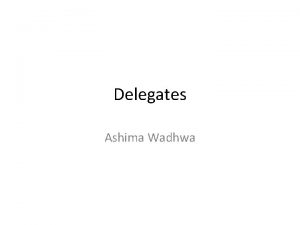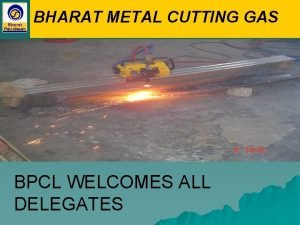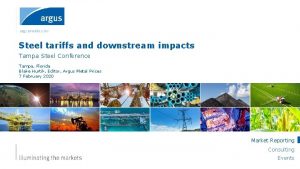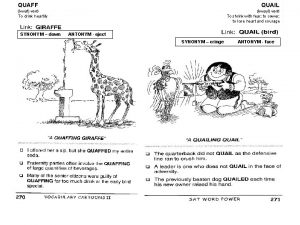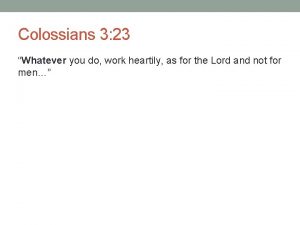HEARTILY WELCOMES DELEGATES OF INDIAN STEEL MARKETS CONFERENCE
































- Slides: 32

HEARTILY WELCOMES DELEGATES OF INDIAN STEEL MARKETS CONFERENCE KOLKATA 8 JUNE 2018

PELLETISATION OF IRON ORE FINES : CAN IT INCREASE DOMESTIC UTILIZATION OF IRON ORE ? MV SUBBA RAO CHAIRMAN -CUM -MANAGING DIRECTOR KIOCL LIMITED BANGALORE, INDIA

STEEL INDUSTRY AN OVERVIEW 3

GLOBAL STEEL SCENARIO � World crude steel production reached 1, 691. 2 million tonnes (Mt) for the year 2017, up by 5. 3% , Share of China raised to 49%. � World’s steel demand is reported to raise 1. 8%, 0. 7% in 2018, 2019 resp. � Demand in China expected to flat in 2018, drop by 2% in 2019. � Demand in developing countries increase by 4. 9%, 4. 5% in 2018, 2019 resp. � Demand in developed countries increase by 1. 8%, 1. 1% in 2018, 2019 resp. � Australia remain biggest producer of Iron ore followed by Brazil, China, India, Russia etc

INDIAN STEEL SCENARIO � India is the 3 rd largest crude steel producer [101. 4 Mt] in the world after China [831. 7 Mt] & Japan [104. 8 Mt] with a production capacity of around 134 Mt during FY 2017, 175 Mt by 2022, 300 Mt by 2031. � Steel sector contributes to around 2% of IGDP, employs over 25 Lakh people. � Per capita steel consumption in the country is currently estimated at 63 kgs against World average 216 kgs : scope to increase consumption. � Steel production has been growing at a rate of (CAGR) 5. 4%. 5

STEEL MAKING � Steel is mainly produced through two routes: 1. Primary Steel Making - Blast Furnace Route

STEEL MAKING 2. Secondary Steel Making - Electric Arc Furnace Route / Induction Furnace � Pellets are used as raw material in both methods of steel making.

NATIONAL STEEL POLICY 2017 • Approved by Cabinet in May 2017. • Per Capita Consumption to increase from present 61 Kg to 168 Kg by 2030. • Target of producing 300 Million Tonne of Steel by 2030. • Requires 480 Million Tonnes of Iron ore and 360 Million Tonnes of Coking Coal. • Current Level is 120 Million Tonnes. Next 12 years India needs to augment capacity gradually, (both Green field and brown field) • Envisages 25% utilization of Pellets in the Blast Furnaces to be set in future. • R$D in Steel Sector through Steel Research and Technology Mission of India (SRTMI) 8

INDIAN IRON ORE - RESERVES • Out of total 28. 53 BT [17. 88 BT - Hematite & 10. 64 BT – Magnetite] • Grade distribution as per available Fe% in Lumps, Fines & Blue dust § High Grade: Fe > 63% - 20% § Medium Grade: 60% < Fe <63% - 30% § Low Grade: Fe < 60% - 50% • Threat for high grade Iron Ore due to depletion. • Indian ores are fragile in nature and generation of lumps & fines is 30 : 70 ratio. • Orissa accounts for 34%, Jharkhand : 26%, Chhattisgarh : 19% , Karnataka : 12% , Goa : 5% • Around 200 mt of Low grade fines lying idle at dumps near pit heads. [Source: Indian Mineral Yearbook 2010, Indian Bureau of Mines] 9

PELLETS � � � � Historically, blast furnace feedstock was naturally occurring lump ore. Large amounts of iron ore fines generated during mining. Blast furnaces could not use fines generated. High grade lump ore deposit depletion forced development of agglomeration processes. Sintering and Pelletizing are most popular agglomeration processes. Lumps, Sinter and Pellets are mainly used as burden in Blast Furnaces all over the world. In pelletisation, green unbaked pellet or ball is formed and then hardened by heating.

PELLETS � Based on quality, two grades of pellets are produced World over : � � � Direct Reduction (DR) grade pellets. Blast Furnace (BF) grade pellets. Flux Pellets. � Pellets are used as substitute to Sinter / Calibrated Lump Ore (CLO) in Blast Furnace. � Low grade ore can be used to produce pellets through beneficiation technology. � In an era of shrinking reserves of high-grade lump ore, pellets are gaining additional importance. � It improves productivity & reduces environmental pollution.

PELLETIZATION TECHNOLOGY � Pelletization Technology uses fines generated during the ore extraction process, once considered as waste. � Travelling Gate Technology: Travelling grate technology is the proven and widely used induration furnace technology � Grate Kiln Technology � Circular Pelletizing Technology (introduced by Voestalpine / Siemens) – The world's most compact pelletizing plant facilitates integration at the mine or within a steelworks � Pelletizing of iron ore is a method of Swedish origin, patented in 1912 by AG Anderson. � First commercial plant started operation in Babbitt, Minnesota in 1952. � Allis-Chalmers (predecessor company to Metso) have since built number of such plants. � Kobe Steel, built their first grate-kiln plant in 1966 at Kobe Works, Nadahama, Japan. � Since 2000, grate-kiln process developed by the Shougang Group has been rapidly adopted in China.

PELLET SCENARIO - INDIA • India being rich in iron ore deposits did not feel the need for setting up pellet plants. • Mandovi Pellets was the first plant to be set up with 1. 8 Mt capacity in 1979 at Shiroda, Goa. • KIOCL was the second plant to be set up in 1987 at Mangalore with 3. 5 Mt Capacity. • The growth of pellet industry in the country was very slow with a capacity of 20 Mt in 2010.

PELLET SCENARIO - INDIA Growth in Indian Pellet production capacity 90 87 63 80 70 50 m. T/Year 60 37. 4 50 29. 9 40 30 20. 7 20 10 0 2011 2012 2013 2014 2017 Note : Prevailing capacity utilisation is around 60% only.

PELLET SCENARIO - INDIA Major Pellet Producers in India Total capacity – 87. 0 Million Tons (Mt) 14. 0 (16. 47%) 27 (31. 76%) 2. 4 2. 0 (2. 82%) (2. 35%)3. 5 (4. 12%) 4. 0 (4. 71%) 3. 85 (4. 53%) 6. 0 (7. 05%) Essar Steel India Ltd - 14. 0 JSW Steel Ltd - 13. 2 JSPL - 9. 0 13. 2 Tata Steels - 6. 0 (15. 53%) Bhushan Power & Steel -3. 85 Bramhi River Pellet - 4. 0 KIOCL - 3. 5 MSPL Ltd - 2. 4 9. 0 Monnet Ispat - 2. 0 (10. 59%) Others - 29

PELLET SCENARIO - INDIA � Integrated Steel plants in India predominantly use CLO and Sinter due to cost economics. � Pellet being costly raw material, steel mills prefer to use CLO, Sinter and Pellets in that order. � Industry witnessed rapid growth in last seven years with capacity crossing 85 Mt per annum. � Domestic consumption of pellets increasing continuously. � Globally also pellet capacity utilisation crossed 57%.

MARKET SCENARIO OF PELLETS � Marked improvement observed in Global steel demand during 2017 ( around 7%). � Spot pellet premium witnessed steep rise and touched US $ 62 during Nov 2017. � Demand projected to remain stable in 2018. � Demand projected to improve in India by about 10% in 2018. � Demand is also projected to improve in developed economies.

MARKET OUTLOOK � High coke prices expected to improve demand for pellets. � Implementation of stricter pollution norms, restriction on sintering in China also expected to improve the demand for pellets. � China is reported to be reducing steel production capacity continuously and shutting down obsolete technology plants. � Reduced production capacity and improved steel demand expected to improve demand for pellets. � The move towards a more efficient steel industry, along with the enforcement of stricter environmental policies in China, should support the demand for high quality ores that enable productivity and lower emission levels.

BENEFITS OF PELLETS IN IRON MAKING � Higher Yield : Higher Fe content in Pellets yields higher metallic iron in P-DRI. � Higher production : Uniform shape, Porosity, high CCS, increase production of sponge iron by 15 - 20% with same amount of fuel. � Higher Metallization : Low gangue content in pellets gives about 90% or higher metallization compared to lump ore (85 to 87%).

BENEFITS OF PELLETS IN IRON MAKING � Less fines generation : Higher tumbler index generates very less amount of fines during reduction (about 5 to 7% compared to lump 25 to 30%). � Pellets have very high cold crushing strength resulting in negligible generation of fines in stock house. Only 1 -2% will be – 5 mm range. � Good quality pellets can be produced at low Si. O 2 levels (1. 5 to 3. 5%) whereas, it is difficult to produce quality sinter at a Si. O 2 level of less than 4. 5%, which helps slag volume reduction more than 25%. � Uniform quality & superior chemistry will enhance production by nearly 10 to 15% of their rated capacity.

BENEFITS OF PELLETS IN IRON MAKING � Specific consumption of coal/coke/heat energy will come down by 10 to 15%. � Campaign life will increase to almost double and refractory repairing cost will be reduced by 50%. � High porosity (20 to 25%) leads to faster reduction. � About 10 -15% less power consumption compared to sponge iron from lump ore. � Emissions in sintering process are much higher when compared to pelletizing process. Decreases the emission rate CO 2 by 85%, SOx by 90%, NOx by 20% compared to sinters.

BENEFITS OF PELLETS IN IRON MAKING � Advantages of Iron Ore Pellets over Lump Ore

KIOCL PROFILE � Schedule ‘A’ Miniratna Category- I, 100% EOU CPSE under Administrative control of Ministry of Steel, Go. I. � Accredited with ISO-9001: 2008, ISO-14001: 2004 & OHSAS 18001: 2007 Certifications for International Standards. � Established on 02. 04. 1976 with core objective for Mining & Beneficiation of low grade Magnetite Iron Ore at Kudremukh mine, Chikmagalur Dist, Karnataka. � Set up the Pelletisation Plant with a capacity of 3. 5 MTPA in 1987. Can process both DR & BF grade Pellets.

KIOCL Location

KIOCL


KIOCL � Pellet Plant is shore based with captive berth & mechanical loading facilities. � Facilitates on arrival berthing of vessels for loading of pellets. � Captive berth with 12. 5 mtrs draft can complete loading of 50, 000 MT of pellets in one weather working day. � KIOCL supplied pellets to various countries such as China, Japan, Iran, Turkey, Taiwan, Qatar, South Korea etc.

FACILITIES AVAILABLE AT MANGALORE Pellet Plant Unit at Mangalore produces High Quality iron Oxide pellets. The Plant has following facilities. ● Double Decker Roller Screens ● Pelletizing Discs, Roller Press, HPF ● Indurating Machine ● The pellets are reclaimed through a pellet re-claimer of capacity 6000 TPH. ● Ship loader with capacity of 6000 TPH. ● Loading rate average 40, 000 T/day is guaranteed for Panamax type vessels. 28

FACILITIES AVAILABLE AT MANGALORE Iron ore fines received is stored in Shed No II as a stockpile having a capacity of 2. 0 lakh MT. ● A captive berth to handle ships of 65, 000 DWT with a loaded draft of 12. 5 meters. ● The captive berth allows on arrival berthing of vessels.

FINANCIAL YEAR 0. 119 2017 -18 2016 -17 2015 -16 0. 165 0. 100 0. 000 2013 -14 2014 -15 0. 000 2012 -13 2011 -12 2010 -11 2009 -10 2008 -09 2007 -08 2006 -07 2005 -06 0. 481 0. 869 1. 355 0. 537 0. 898 0. 920 1. 464 3. 111 3. 500 2004 -05 3. 031 2003 -04 2. 569 2. 556 3. 026 1. 985 2. 173 2. 231 2. 415 2002 -03 2001 -02 2000 -01 1. 757 2. 119 1. 871 2. 112 3. 000 1999 -2000 1998 -99 1997 -98 1996 -97 1995 -96 1994 -95 1. 354 2. 500 1993 -94 1992 -93 1. 666 1. 946 1991 -92 0. 000 1. 635 1. 500 1990 -91 1989 -90 1. 657 2. 000 1988 -89 0. 791 1. 000 1987 -88 0. 155 0. 500 1986 -87 QUANTITY ( Million Tons) KIOCL PERFORMANCE EXPORT SALE OF PELLETS BY KIOCL

CAN PELLETIZATION INCREASE DOMESTIC UTILIZATION OF IRON ORE � Lumps to Fines ratio going up, depletion in high grade ore. � Beneficiation and agglomeration increases availability of ore. � Preferred raw material over sinter and lumps. � Environmental friendly process w. r. t sinter. � High productivity.

EC OL OG Y– OU RM ISS IO NO UR OB SE SSI ON VISIT US : - http: //www. kioclltd. in 32
 School welcomes you
School welcomes you Http://www.freetranslation.com/
Http://www.freetranslation.com/ School welcomes you
School welcomes you God welcomes us
God welcomes us Sequence of service in restaurant
Sequence of service in restaurant School welcomes you
School welcomes you Family welcomes you
Family welcomes you Pantene conditioners
Pantene conditioners Welcome all delegates
Welcome all delegates Welcome all delegates
Welcome all delegates Welcome to all delegates
Welcome to all delegates Oie delegates
Oie delegates Main submitter speech example
Main submitter speech example Welcome all delegates
Welcome all delegates Reaching global markets
Reaching global markets Changes in an individual's behavior arising from experience
Changes in an individual's behavior arising from experience Levich international financial markets
Levich international financial markets Difference between primary and secondary market
Difference between primary and secondary market Gramin agricultural markets
Gramin agricultural markets Firms in competitive markets chapter 14 ppt
Firms in competitive markets chapter 14 ppt Analyzing business markets
Analyzing business markets Analyzing consumer markets
Analyzing consumer markets Why study money banking and financial markets
Why study money banking and financial markets International financial markets and instruments
International financial markets and instruments State of the voluntary carbon markets 2017
State of the voluntary carbon markets 2017 Consumers producers and the efficiency of markets
Consumers producers and the efficiency of markets Nomura connecting markets east & west
Nomura connecting markets east & west Mechanics of options
Mechanics of options Madura j. financial markets and institutions
Madura j. financial markets and institutions Labor markets
Labor markets When entering foreign markets basic entry
When entering foreign markets basic entry Mechanics of futures market
Mechanics of futures market Cisi financial markets
Cisi financial markets






